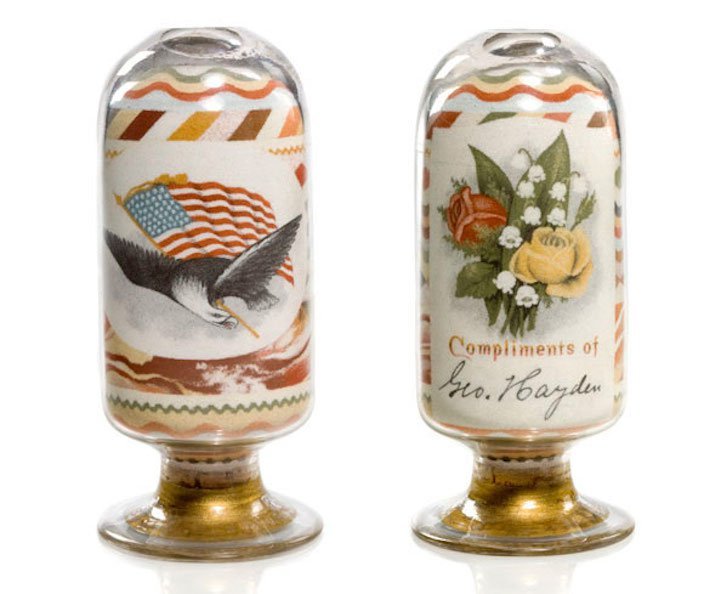Passing through our fingers quietly, quickly, smoothly, sand is a queer element. It’s scattered all around. Lying everywhere, simply. And yet, it holds the potential to create the most beautiful and artistic sights our eyes can ever behold. Have you seen the sand dunes? Creating such beautiful crescents and pointed tops, running smoothly under our feet. With something as simple as sand, did you ever imagine the unbelievable art that can be created (Sand art is not everyone’s cup of tea, we know!)? Be it using colored sand to create patterns, or showing the best of sand art in small bottles, it all exists!
Without further ado, we welcome you to the mesmerizing world of sand art. Oh, and yes, we dare you to go through this article without gaping at the marvelous art and wondering how had you never seen this beauty before (we know we did). Here are just a few ways in which sand can be turned into art but we assure you, these are just some grains in an endless desert (pun intended).
-
Sand Castles
Building sand castles has been a wistful dream for many of us. Remember those sand castles you imagined you’d build if you ever went to the beach? Even though it is play for many, for professionals, it is a challenging task which requires a lot of hard work. Artists all over the (coastal) world turn beaches into canvases and make majestic sand castles which would turn Disney movies to shame.
 Image courtesy-http://s280.photobucket.com/user/Dremr22/media/SandCastle.jpg.html
Image courtesy-http://s280.photobucket.com/user/Dremr22/media/SandCastle.jpg.html
-
Sand Sculptures
Sand sculptures are one of the most difficult forms of sand art. They are made on a huge scale and are well, larger than life! Professionals work with a lot of precision because making a mistake means unmaking the sculpture and making it again, which is as difficult as it sounds. Sand, you see, is very quick to slide away, thus the artists have to be very meticulous about their work. Sand sculptures have often been used to spread social messages, celebrate moments, or to simply show your love for a particular thing (In this case, our love for Harry Potter as is obvious from the selection of this photograph).
Image courtesy– http://www.impulsegamer.com/articles/wp-content/uploads/2015/01/sandsculptingaustraliafriendsfoesandsuperheroes04.jpg http://maxcdn.thedesigninspiration.com/wp-content/uploads/2014/03/Sand-Sculpture-005.jpg
-
Sand Painting
Sand painting is another vibrant form of sand art. What truly stands out about this particular art form is the fact that it includes the use of vibrantly colored sand granules, brought together to form absolutely stunning designs and patterns on any base. Sand artist Joe Mangrum is widely known for his large-scale sand paintings. He uses the streets as his canvas and creates the most articulate patterns. His motto behind these sand paintings is to add color to people’s lives, but more importantly, to make people stop, even if it is for just a minute, to admire the beauty something as simple as sand holds.
See more of his sand paintings here.
Image courtesy-http://www.demilked.com/sand-paintings-joe-mangrum/
–
-
Sand Animation
Perhaps the most widely known form of sand art, sand animation holds a unique place in the ranks of the different kinds of sand art. This is due to the fact that unlike other forms, it is not pre-done and then presented. Instead, as the word ‘animation’ clearly suggests, it is a live form of art, where sand is moved by hand to create a sequence of scenes. Sand animation not only requires precision, but also, deftness of hand in order to create the scenes.
Kseniya Simonova is a Ukrainian sand animator who rose to fame by showcasing her skills on Ukraine’s Got Talent, which she eventually ended up winning. Her work mainly revolves around the theme of ‘human emotions’.
She believes that her work should strive to make “something close to all hearts”. Through her work, she wants people to stop, think and reflect upon their lives and choices.
 Image Courtesy-http://designontheedge.com/sand-animation-by-kseniya-simonova/
Image Courtesy-http://designontheedge.com/sand-animation-by-kseniya-simonova/
Watch her create some masterful pieces of sand animation on her YouTube channel.
Another sand animator is Ferenc Cako. He is a Hungarian artist who displays the complexities of human emotions through his work. His main aim is to bring to light, the demons and repressed feelings that reside inside all of us. He showcases the depths of the mind through his work.
 Image Courtesy- http://katerinacherrell.blogspot.in/2008/04/stone-ferenc-cako.html
Image Courtesy- http://katerinacherrell.blogspot.in/2008/04/stone-ferenc-cako.html
Although he is a sand animator, he focuses on spreading his message through the finished artwork rather than the process of sand animation.
5. Sand Bottles
Now here comes our favorite type of sand art! This is the most difficult of all forms, requires absolute concentration, precision and lightness of hand. One wrong move, one little, tiny mistake, and it’s all ruined. You gotta start all over again (That doesn’t sound good)! In this type of sand art, differently colored sand is compressed and put inside glass bottles in such a way that it creates and depicts designs when one looks at the bottle from the outside.
Yes, it is indeed possible. But only by the likes of Andrew Clemens (definitely not us mortals). Clemens was an American sand artist who used different colored sands to create pieces of art by compressing them into small chemists’ jars. One interesting fact (other than the fact that the man created stunning patterns inside jars, without glue) about this is that he only used naturally colored sand and never applied artificial color to sand at all. He never used glue to make it more stable, but always used the natural pressure exerted by grains of sand to stabilize the patterns. Clemens created most of his work between 1880–1886 and is acknowledged as the inventor and possibly the sole practitioner of his art form.
Clemens, with his work, had produced some of the most beautiful and stunning artworks of all time.
 Image Courtesy- http://www.amusingplanet.com/2014/10/layered-sand-art-by-andrew-clemens.html
Image Courtesy- http://www.amusingplanet.com/2014/10/layered-sand-art-by-andrew-clemens.html
In case you thought that true art requires complicated materials, we’re sure that seeing all these artists create wonders with something as simple as sand banished that notion for good. Maybe this is what art is really about. You see, true art doesn’t care for materials, resources, mediums or even locations. It can be created and manifested anywhere, anytime, even with the simplest of elements, such as, in this case, sand.




















